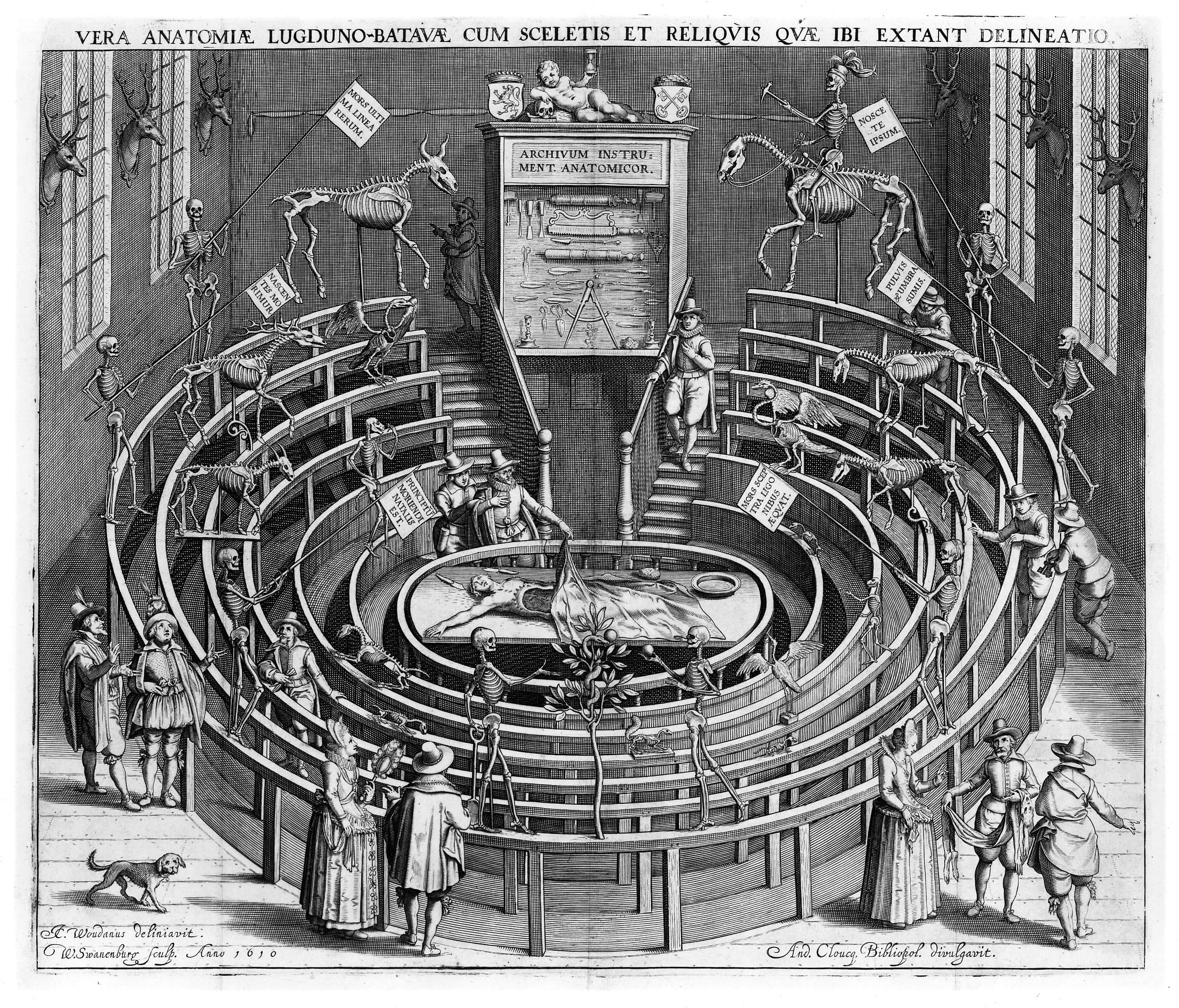"Hello there my name Hieronymus Fabricius ab Aquapendente"
"Erm what?"
"My name is Hieronymus Fabricius ab Aquapendente."
"Heroine-wh-mus fabricatus and Aqua-pendent?"
"No Hier-ony-mus Fabri-ci-us ab Aqua-pen-dent-e."
"Right... and what do you do then?"
"I cut up dead bodies for a living."
Anyway I digress). It was designed so that the dissecting table with the body would sit at the centre of the rows of seats so everyone could see the dissection happen before their eyes. The architecture later influenced the building plans for Opera Houses in the 16th Century.
Anatomical theatres became popular in the 16th Century (People always like blood and gore, have you noticed yet?), so more were built at the universities of Bologna and Leiden.

In 1597 the University of Leiden created an anatomical theatre in a disused church. The engraving above was done in 1610 and also shows exhibits as well as the dissection taking place in front of the audience along with inscriptions saying...
"Know thy self"
"We are dust and shadow"
"Being born we die"
It became known (the anatomical theatre not the engraving) as the kunstkummer ("a cabinet of wonders") and was the beginnings of the museum, showing exhibits in summertime and keeping dissection for winter time when bodies could be kept for longer periods of time.
Resources
Books
- Anatomy for the Artist by Sarah Simblet (Author), John Davies (Photographer)

No comments:
Post a Comment